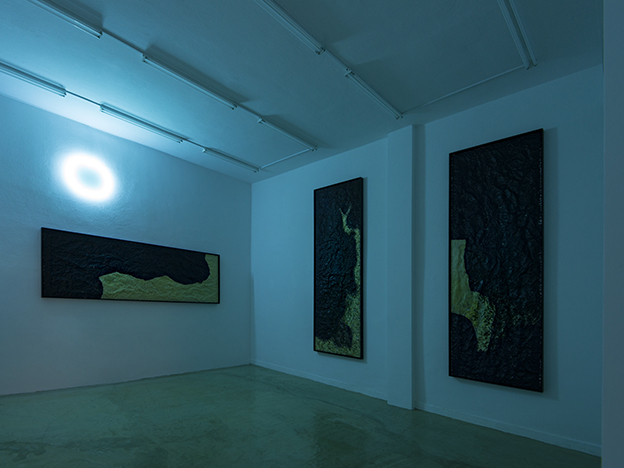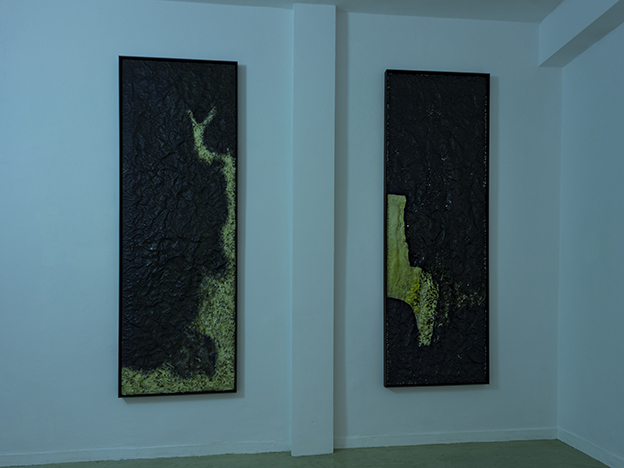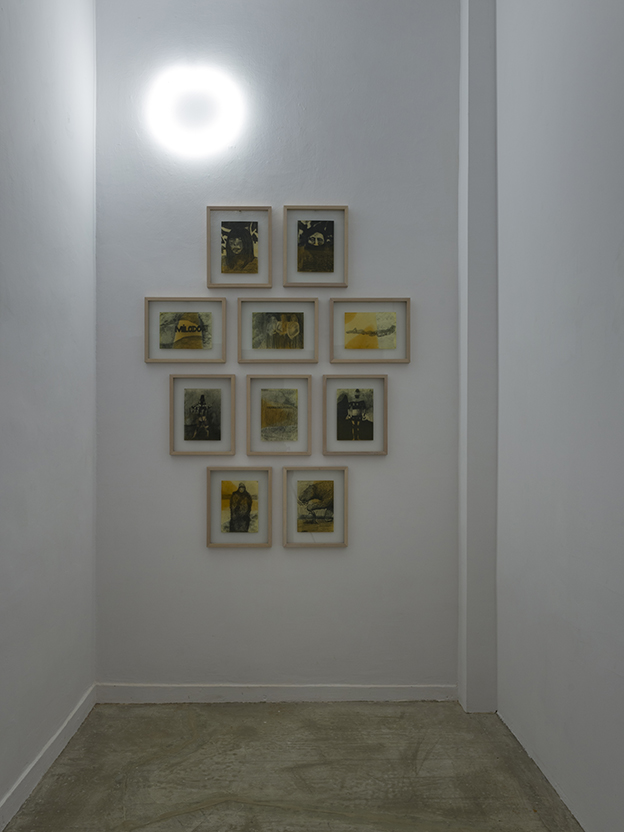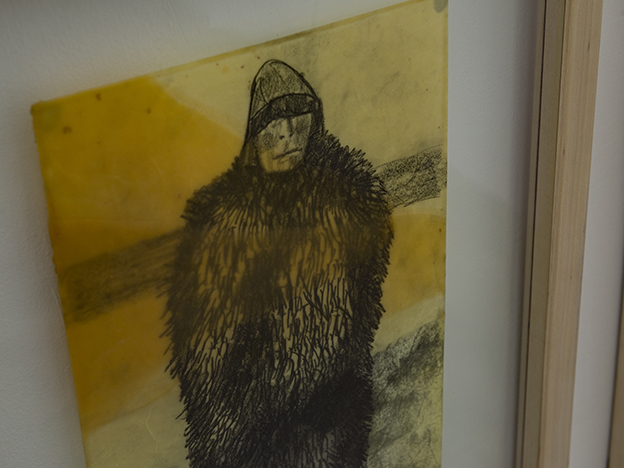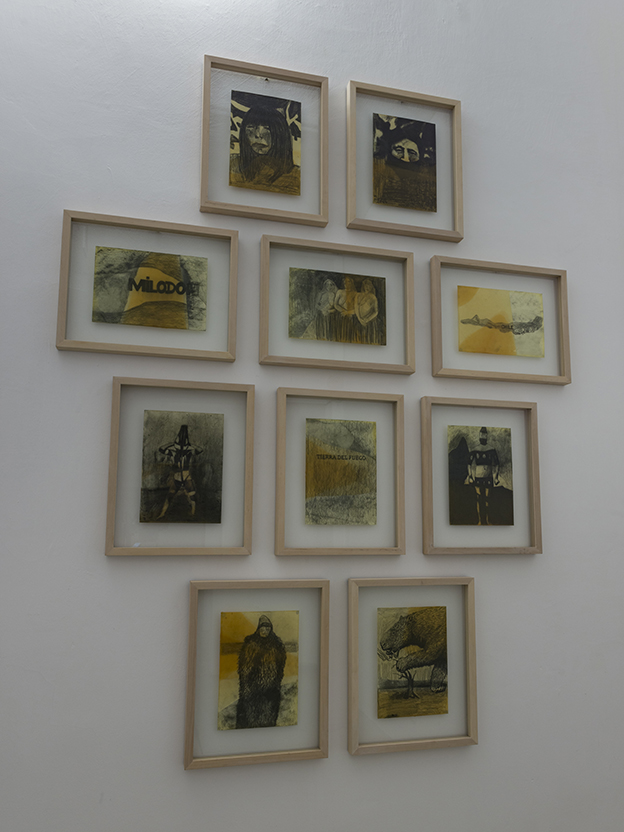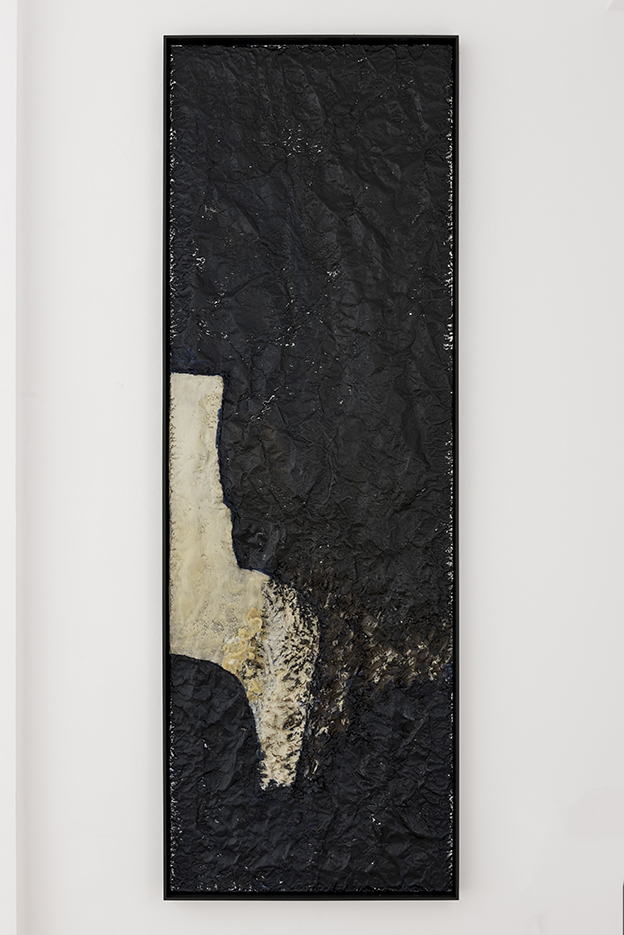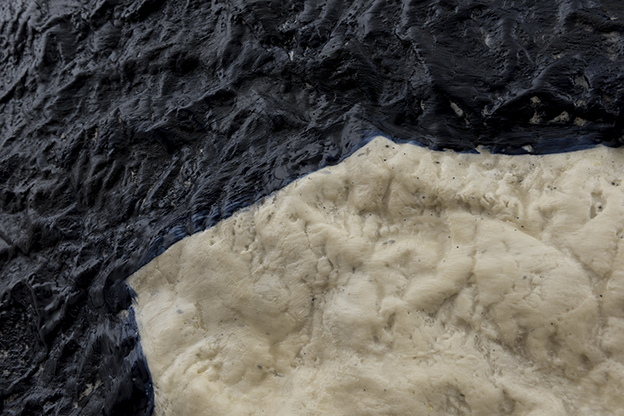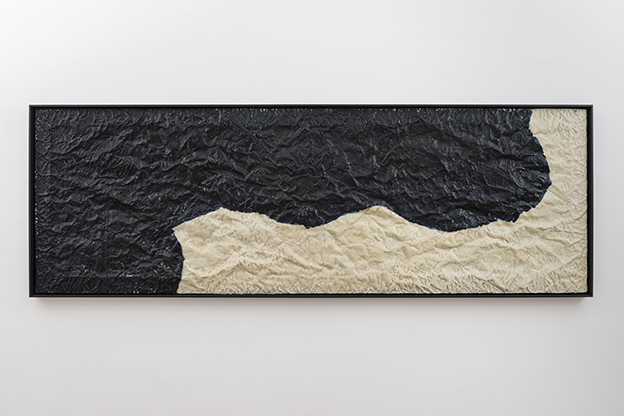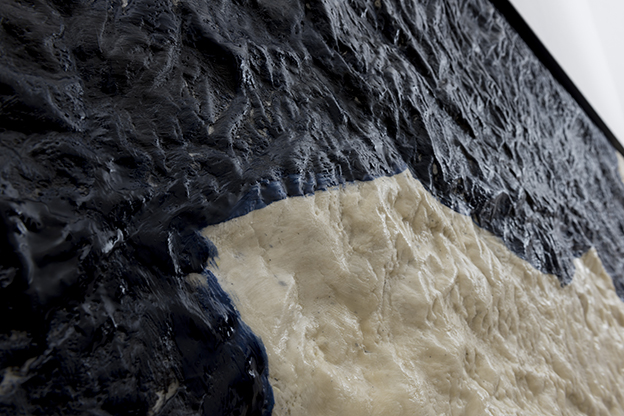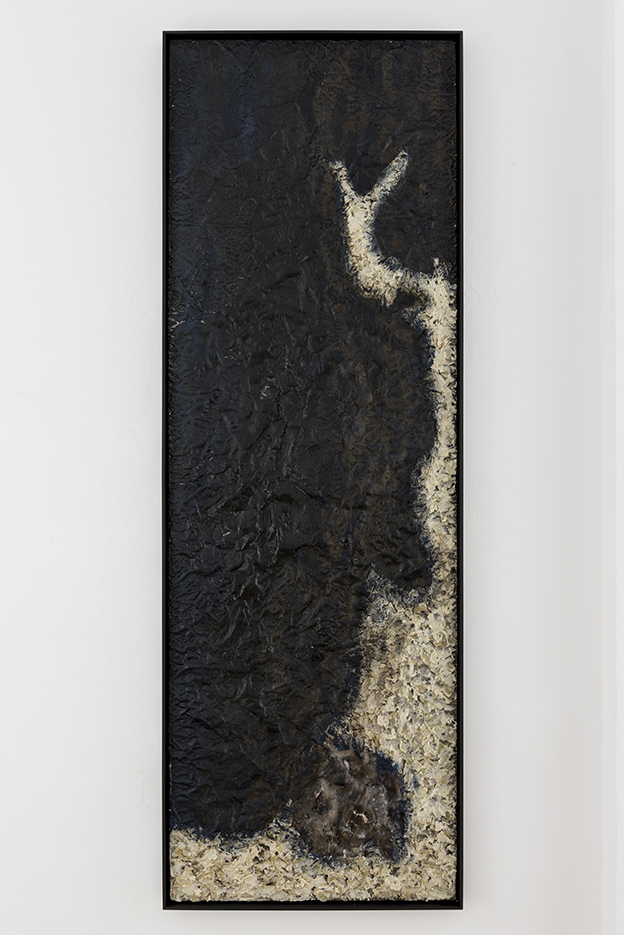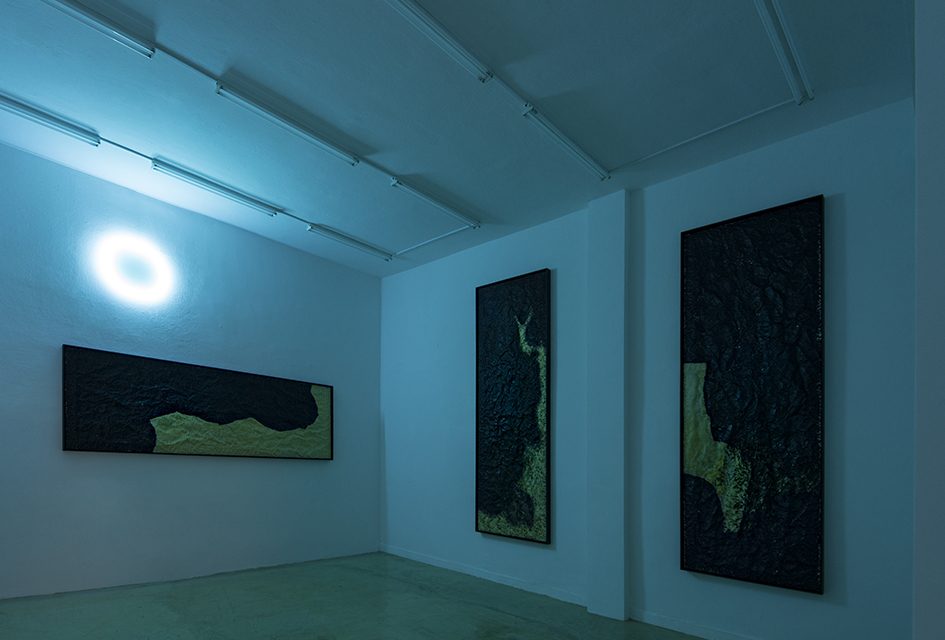Tierra del Fuego, 2018.
Solo show. Leto Gallery, Warsaw, Poland.
The Archipelago of Tierra del Fuego, “Land of Fire” is the southernmost tip of South America. The extreme climate conditions, the isolation of the isles, and the sensation of geological excess they evoke, caused the newcomers from Europe to view the natives as mythological Giants. This was not so much because of the undoubted diversity of their customs, as it was because of this “non-human” adaptation to conditions so inhospitable that it surpassed the European idea of Nature. Tierra del Fuego has become the synonym for biblical land before the great flood. Almost nothing is left of those “Giants” who once lived and had a close relationship with their environment. The cultures of Selk’nam, Jamana or Kawesquar people, who preserve the vision of the world from thousands of years before, disappeared suddenly within the last decades of the XIX century.
Playing on the geological-anthropological fantasies, Angelika Markul takes us on a journey searching for a past that is captivated in the landscape and its matter. The memory which seemed to be lost forever, reappears in Markul’s works, confronts us with this non-human dimension of the Tierra del Fuego’s landscape and proves the catastrophe that befell the natives. The unfolding analogy between the melting glacial and disappearing local cultures, makes human destruction geological-like, the contemporary civilization becomes the apocalyptic force, destroying those seemingly eternal environmental and cultural formations. In Angelika Markul’s post-biblical geology (the near homophonic words “geology” and “theology” are not used here by accident) the demise of the native cultures perhaps heralds the melting glaciers, which in turn, can as well be the prefiguration of the final confusion of the elements. In the contemporary world, the endeavors to separate the human from the non-human are already doomed to failure – which applies to the perpetrators of the catastrophe as much as to the victims.
The choice of the artworks for the exhibition is the consequence of Markul’s interests in materiality and geology and in this very case it originates from one of her latest video works – shot in Patagonia “Memory of the Glaciers.” Taking the phenomenon of quickly melting glaciers in the Terra del Fuego as the starting point, the artist combines the drawings of extinct animals, the maps of this part of the world and the large-scale panneaux with geological texture bringing up the materiality of the terrain.
With this media, playing with matter and light in the gallery space, she builds Gesamtkunstwerk-landscape of the furthest territories of Chile and Argentina. Markul uses a number of her own sketches where she is recontextualizing the sparse materials documenting the lives of people in Tierra del Fuego – scenes of everyday life and fascinating rituals photographed by Martin Gusinde, an Austrian priest and ethnologist. Is she trying to reconstruct the Selk’nam tribe’s world vision? Or is it the vision of one of the performers of the “Hain” ceremony? Or is it the reconstruction of the stress of acting out the tradition in one of the European “human zoos,” where the people of Tierra del Fuego were kept?
The colors and composition make the sketched figures less unreal than they seem in the original photographs. The ocher covering the bodies of the rituals’ participants, in the context of Markul’s earlier works and together with those “orogenic” panneaux displayed at the exhibition, bringing to mind the profound scale of the Earth’s movements, may suggest that the artist is offering us some exercises in perception. She pays her respects to the people swept aside by history and searches for testimony in the material of the past, shortening our distance to what we consider as non-human nature.
text: Krzysztof Gutfrański
